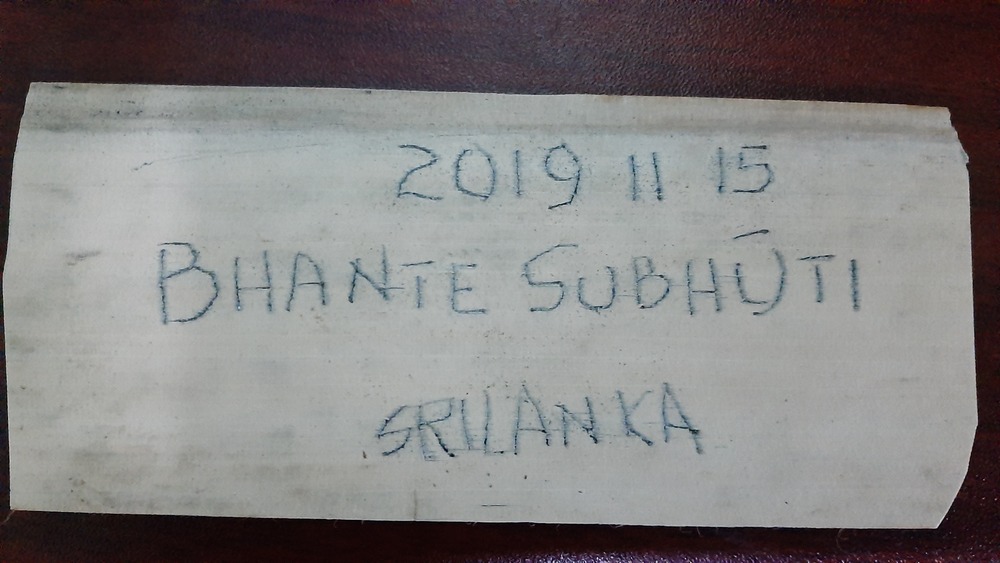There is a popular here say, emerged from the Later Burmese Biographical Text Buddhaghosuppatti ( perhaps as early as the 15th century) that Buddhaghosa Thera burnt ancient Sihala Atthakathas after he translated them into Pali.
Evidences supporting the fact that Buddhaghosa Thera did not burn the Ancient Sinhala commentaries.
Buddhist Commentarial Literature by L. R. Goonesekere, BPS:
The Dhampiyā-aṭuvāgāṭäpadaya , a work dated in the tenth century A. C., contains quotations from these commentaries in the original Sinhalese (pp. 136, 148, 149). In the Sahassavatthuppakaraṇa, a work assigned to a period before the eleventh century A. C., the author says in the introduction that he is following the method of the Sīhalaṭṭhakathā. There is evidence that the Sinhalese commentaries were available also to the author of the Vaṃsatthappakāsinī which has been dated by Malalasekera in the eighth century or ninth century A. C. (Mhv-a Intr. p. cix) and by Geiger between 1000 and 1250 A.C. (Dīpavaṃsa and Mahāvaṃsa 34). The author of the Vaṃsatthappakāsinī has quoted from the Sīhalaṭṭhakathā , Sīhalaṭṭhakathāmahāvaṃsa and Aṭṭhakathā, Uttaravihāra-aṭṭhakathā, Uttaravihāramahāvaṃsa, Porāṇaṭṭhakathā, Vinayaṭṭhakathā, Mahāvaṃsaṭṭhakathā and Dīpavaṃsaṭṭhakathā . These were all commentaries in Sinhalese. Vinayaṭṭhakathā, too, may be taken as referring to the Sinhalese commentary on the Vinaya, as the Samantapāsādikā has been separately quoted. The Pālimuttaka-Vinayavinicchaya-Saṅgaha dated in the twelfth century A.C. contains quotations from the Mahā-aṭṭhakathā, the Mahāpaccari and the Kurundī (pp. 2, 4, Sinhalese edition, B. E. 2450). The Sārasaṅgaha which was probably written in the thirteenth century refers to a statement found in the Vinayaṭṭhakathā (p. 32, Sinhalese edition, 1898) which cannot be traced in the Samantapāsādikā. This would indicate that the statement was taken from the Sinhalese Vinayaṭṭhakathā , unless it was contained in the Samantapāsādikā of the author’s time.
Wikipedia:
The Buddhaghosuppatti, a later biographical text, is generally regarded by Western scholars as being legend rather than history. It adds to the Mahavamsa tale certain details, such as the identity of Buddhaghosa’s parents and his village, as well as several dramatic episodes, such as the conversion of Buddhaghosa’s father and Buddhaghosa’s role in deciding a legal case. It also explains the eventual loss of the Sinhala originals that Buddhaghosa worked from in creating his Pali commentaries by claiming that Buddhaghosa collected and burnt the original manuscripts once his work was completed.
Ven. Nanamoli (Visuddhimagga Translation):
The “popular novel” called Buddhaghosuppatti, which was composed in Burma by an elder called Mahámaògala, perhaps as early as the 15th century, is less dependable.
It has already been remarked that the general opinion of European scholars is that where this imaginative tale differs from, or adds to, the Mahávaísa’s account it is in legend rather than history.
The old commentaries in Sinhalese no longer exist. They seem to have gradually fallen into disuse after Buddhaghosa. There might be some traces of them; I believe the Vinaya commentary in Chinese known as Sudassanavinayavibhasa may have been translated into Chinese from old Sinhala. But in general it seems that Buddhaghosa did as he said: he translated the Sinhala faithfully into Pali—bearing in mind that ancient Sinhala and Pali were closely related anyway—and when that was done the Sangha generally had no need to retain the Sinhalese texts.
Post by Volo » Sat Feb 22, 2020 :
I was trying to find the source of this (that he burned the scriptures). It is not stated in Culavamsa (which contains the main account of Buddhaghosa’s life). Encyclopedia of Buddhism (Malalasekera ed.) says that it is stayed in the text called Buddhaghosuppatti. It’s not clear when was it written, but probably somewhere between 13th and 16th centuries. That is what DPPN says about it:
DPPN wrote: Buddhaghosuppatti A very late account of the life of Buddhaghosa; it is more a romance than a historical chronicle. For an account of this see Law, Pāli Lit. 558 f. The work has been translated and edited by Gray (London).
Encyclopedia of Buddhism also points out that Buddhaghosuppatti mistakenly states that Buddhaghosa went to Sri Lanka to translate tipitaka itself, which is obviously wrong (it was the commentaries what he translated). So the text is not very reliable.In any case, Buddhaghosuppatti indeed says that Buddhaghosa set on fire Sinhalese books, but doesn’t give the reason for, simply mentions that the heap of books was as high as seven elephants of middle size.
Also, according to Culavamsa, the teacher of Buddhaghosa (Revata) when sending him to Sri Lanka said that the commentaries in Sinhalese language are faultless, so why would Buddhaghosa burn them if he heard this from his teacher?
